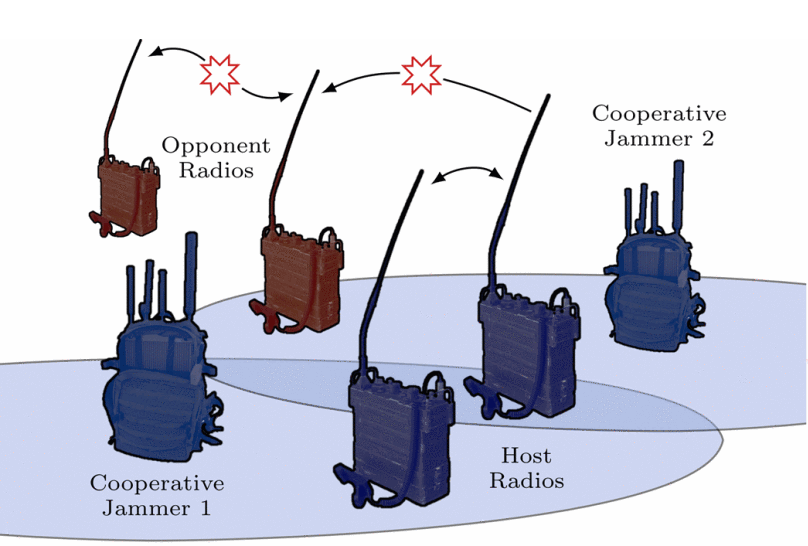Secure and reliable tactical communications within allied defense forces across a battlefield are often fundamental for achieving the forces’ operational targets against an adversary. Likewise, limiting the adversary’s capability to communicate securely and reliably promotes the host forces’ chances for operational success. As such, armed conflicts typically involve an underlying battle in the electromagnetic (EM) spectrum to facilitate one’s own communications and limit the opposition’s. In this work, we propose the use of distributed cooperative jamming for augmenting tactical communications and gaining a technological advantage in that underlying battle. Specifically, we propose a multi-reference known-interference cancellation (KIC) method that allows the host force tactical communication nodes to cancel known interference (KI) from multiple cooperative jammers simultaneously. Relying on simulations, we then study how cooperative jamming affects the opposing forces’ capabilities to use the EM spectrum in a simplified battlefield. Results show that cooperative jamming gives an advantage to those controlling the jammers, as the opposition’s use of the EM spectrum is obstructed for both communications and signals intelligence.
Distributed Cooperative Jamming with Multi-Reference Known-Interference Cancellation
